
If you’ve got an aphid problem you’re looking to fix, you’ve probably read that ladybugs are the solution. Using these cute little beetles to combat tiny green pests is an organic option we see all over the internet. In fact, we’re big fans of this approach here at Rural Sprout.
What you don’t often see is how.
Yes, ladybugs will eat aphids, but how do you get them to your plants in the first place? How do you get them to stay? There’s a lot of ambiguity around using these predatory bugs as pest control.
Well, today, we’re going to clear all of that up. By the end of this post, you’ll have all of the necessary information to:
- Source ladybugs
- When to order them
- What to do when they arrive
- How to apply them to your plants
- When to apply them to your plants
- And things you can do to encourage them to stick around
We’ll jump right into the details, and soon your aphid problem will be a thing of the past.
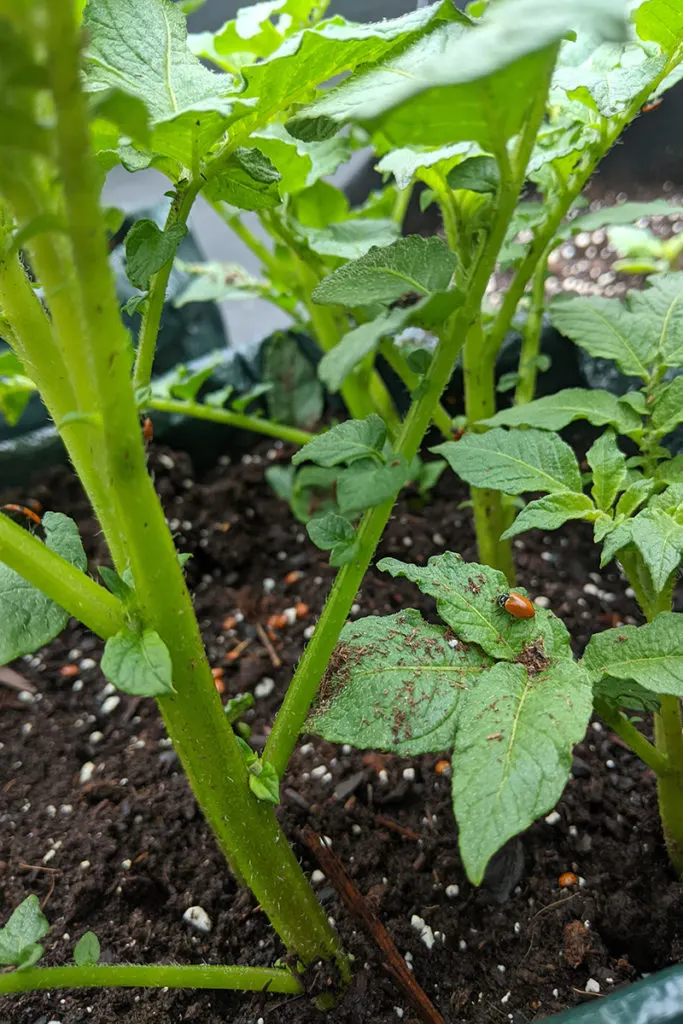
Just to Recap
If you’re reading this, it’s probably safe to assume that you know the benefits of using ladybugs as pest control. These shiny little beetles can eat around 50 aphids a day, which is nothing to sneeze at. But did you know they’re also a great organic option for controlling other soft-bodied insects such as mites, leaf-hoppers and mealybugs?
If it’s soft and tiny, chances are it’s on the menu for a ladybug.
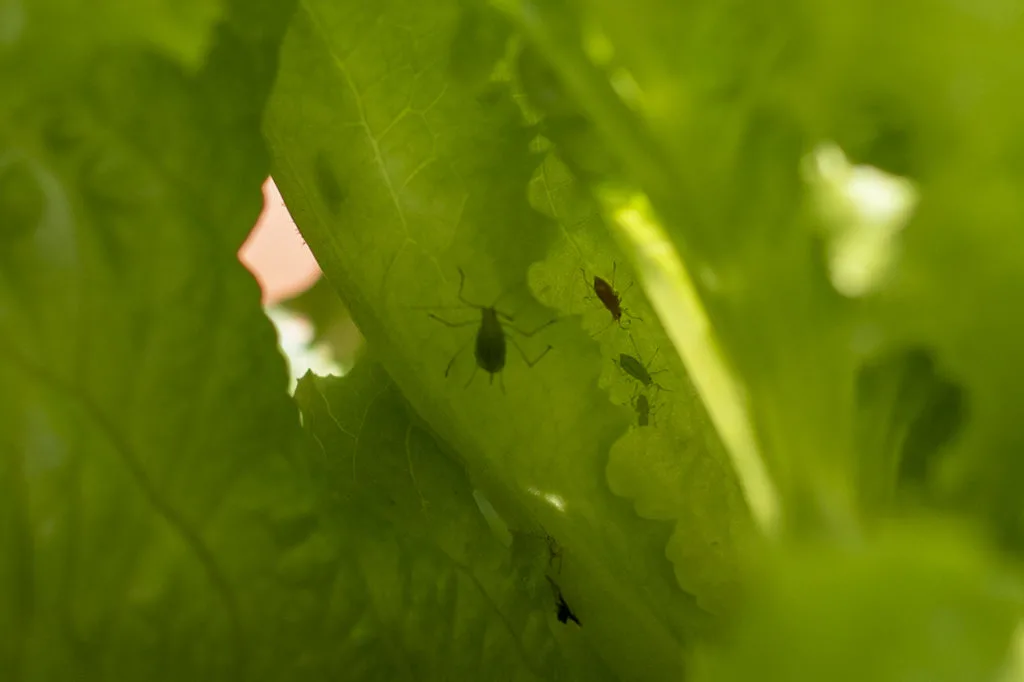
You can wait for ladybugs to gather in your garden of their own accord. If there’s food to eat, they will eventually show up. However, many gardeners need to hurry that process along to save their plants from hungry pests. Enter the mail order ladybug.
Where to Source Ladybugs
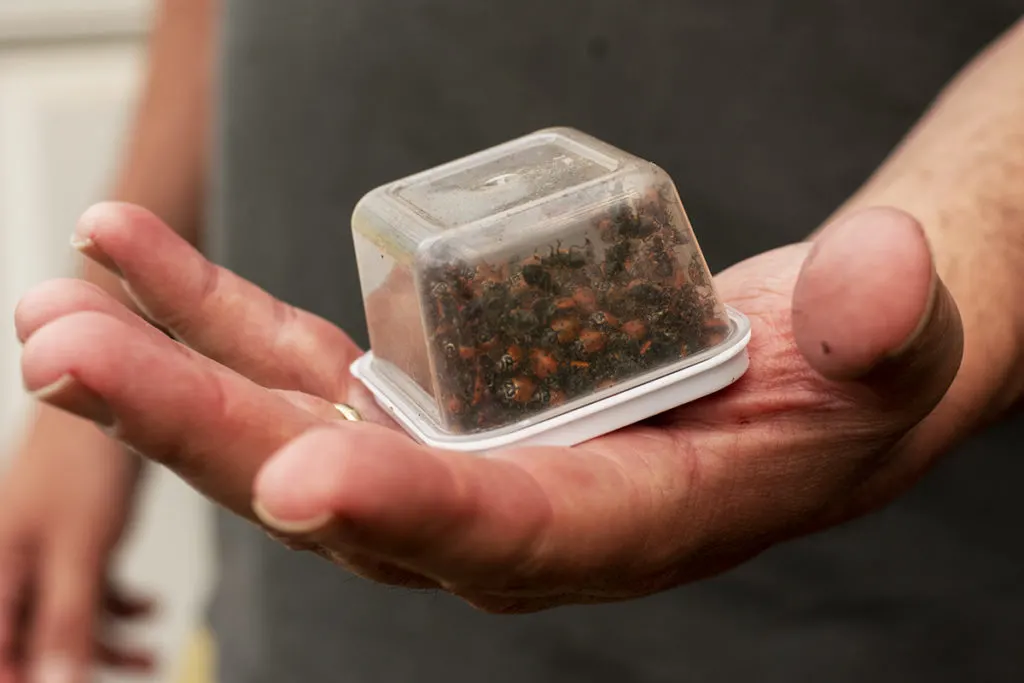
While it would be great to pop into your local garden center and pick up a few hundred ladybugs, most of these places don’t carry live insects. That means you’ll need to order them online. The good news is it’s pretty easy to do so.
I’ve put together a few sources to consider.
Amazon
Like many online purchases, Amazon is a great place to start. You can pick up 1,500 live ladybugs from this page. Something to watch out for, the shipping dates on Amazon vary wildly from vendor to vendor.
eBay
I’ve personally purchased ladybugs from High Sierra Ladybugs on eBay. They shipped them out quickly, and the bugs arrived in great shape. These are the beetles featured in most of the photographs.
There are plenty of other vendors on eBay who sell ladybugs and have great reviews. Look around and ask questions before you buy.
Nature’s Good Guys
This site specializes in natural live pest control. It’s a great place to pick up ladybugs if you want to populate your garden with many different beneficial insects. Along with ladybugs, they also sell live green lacewings, nematodes, and even earthworms for your DIY vermicomposting tower.
When Should I Order Ladybugs?
When you order ladybugs is entirely up to you, but there are some things to consider.
You may want to receive your insects as soon as possible if you’ve got an ongoing pest issue. Or you may wish to prepopulate your garden with beneficial insects as the pests are beginning to arrive. In that case, you may choose to order your ladybugs at the beginning of the season when your garden starts to take off.
In any case, you’ll need to be able to time their arrival.
When choosing ladybugs, it’s important to know when they will be shipped. Many places ship within days, but depending on demand, others may take up to four weeks before your bugs are shipped. The ship date is an important factor to consider depending on your needs.
Don’t forget to factor in the weather when you’re ordering.
If you order ladybugs during a hot spell, some may die off in transit. Or worse, you could lose a batch entirely if they sit in a hot, metal mailbox all day. For this reason, it’s best to order only from a vendor that will provide tracking information.
You may also wish to purchase your ladybugs from a vendor that has a money-back guarantee or one that will replace bugs if they arrive dead.
What to do When Your Ladybugs Arrive
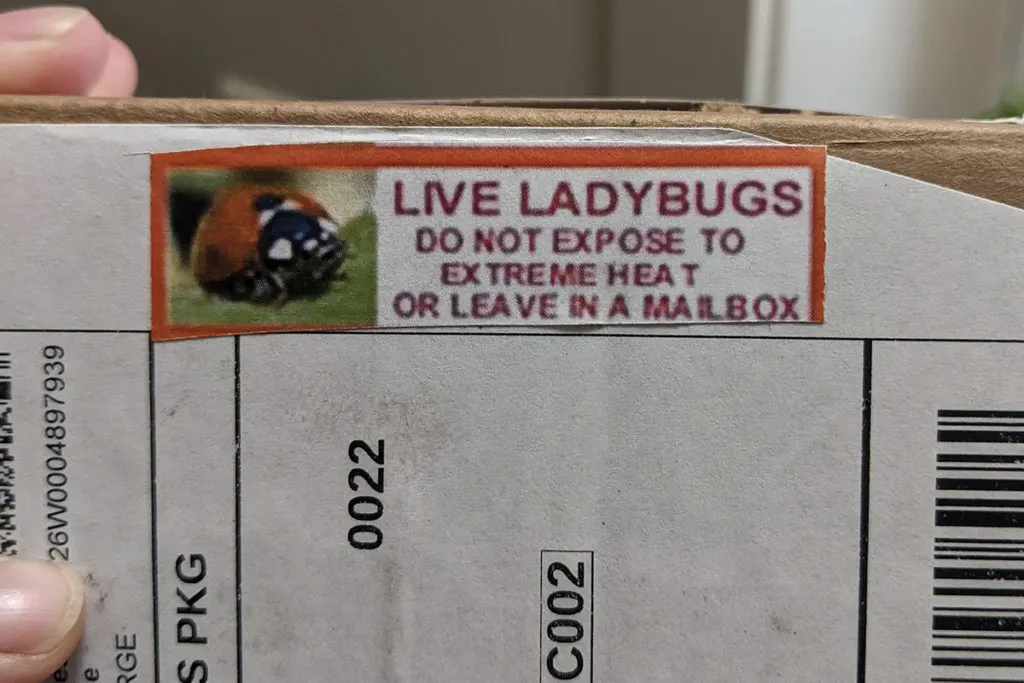
Bring your ladybugs inside as soon as you’re able. You want to get them out of the heat. Store them someplace dark and cool.
You can store them in your refrigerator until it’s time to release them. The cold will slow them down a bit, making them less likely to fly away.
Prep Your Garden for New Visitors
Ladybugs or lady beetles prefer cool, damp places with plenty of food to eat. If you don’t have aphids or other pests for them to snack on, it’s unlikely they will stick around. While you can use ladybugs as a preventative, you need to have some sort of pest population in your garden. Most gardeners can attest, this is rarely a problem.
Water
If the weather permits, plan to release your lady beetles during a cool, rainy stretch. They will happily hunker down in your garden, hiding under plant leaves all while eating aphids. However, if the weather does not cooperate, you will need to mist your garden lightly before releasing your bugs.
Most garden hose attachments these days have a mist or shower setting that works great for this purpose. A sprinkler or watering can will work fine as well. While most vegetable plants prefer not to have their leaves wet, we’ll make an exception in this case.
Dark
Release the beetles at dusk, after the sun has gone down. If you release ladybugs during the day when the sun is shining, and it’s warm, they will fly away to find a cool, dark place to hide.
Ants
Keep an eye on the plants with aphids for a few days before you introduce ladybugs. If you have ants, which is quite common with plenty of aphids, you’ll need to deal with them first. Ants enjoy the honeydew produced by aphids and will jealously guard an aphid colony. Remember, we’re feeding aphids to the ladybugs, not ladybugs to the ants.
Release the Hounds!
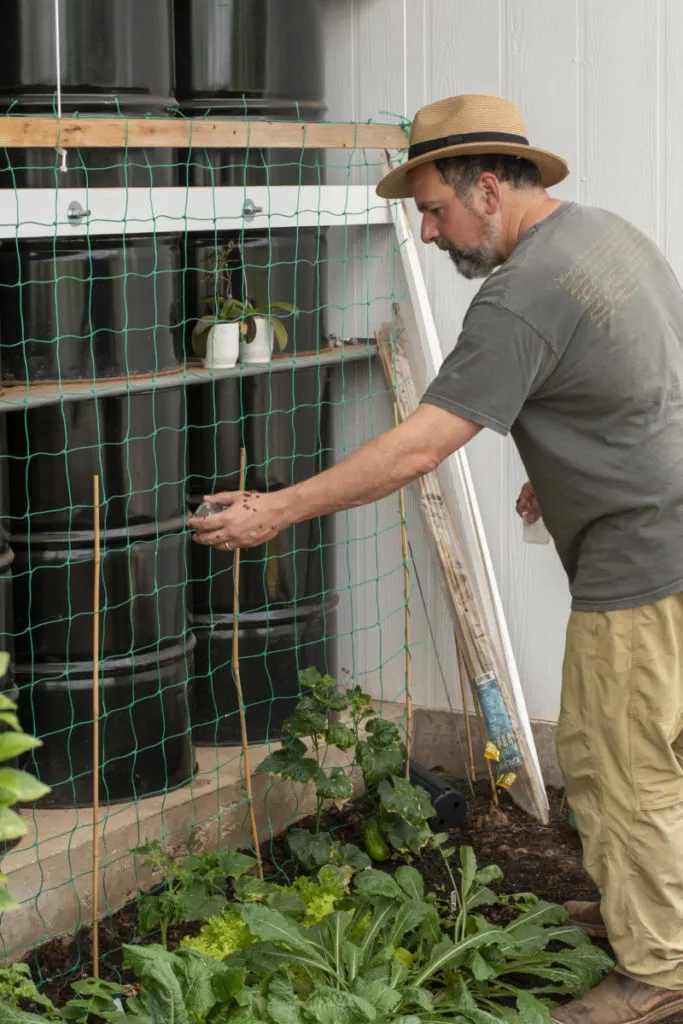
If your beetles arrived in a mesh bag, it’s quite simple to release them. Trim the top off the bag and place it at the base of a plant for a few minutes. Move the bag around your garden until all the ladybugs have climbed out and you’ve covered your garden.
If your ladybugs came in a small plastic container, lucky you, you get to work quickly!
You get to be up close and personal with your new aphid control team. As soon as you open the lid, they will begin climbing out of the container. And onto you, and up your arm, etc.
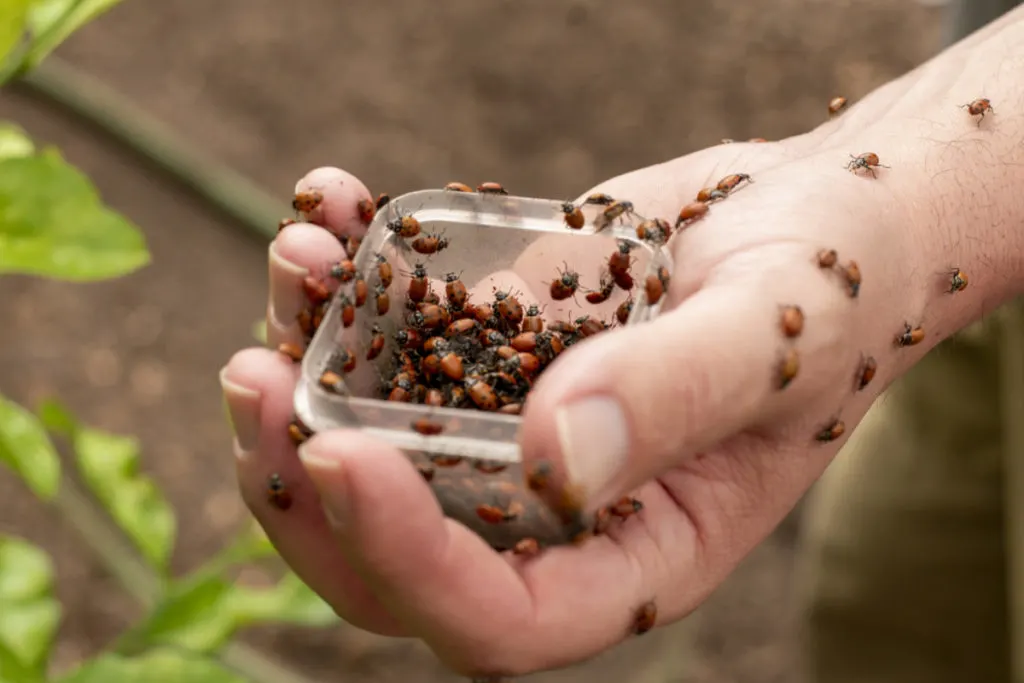
In this scenario, it’s best not to take the lid off until you’re right next to the first plant you wish to “inoculate.” Once you remove the lid, you’ll need to work quickly, sprinkling ladybugs at the base of your plants while moving through your garden.
If you don’t manage to cover the entire garden, don’t worry. The ladybugs that stick around will spread out and follow the food.
A Staggered Aphid Attack
You will lose ladybugs. It happens. Even with proper planning and release, a few or many will fly away. For that reason, some folks like to release two batches a few days apart. If you plan to do this, store extra insects in the fridge until you’re ready for your second release.
Getting Your Ladybugs to Stick Around
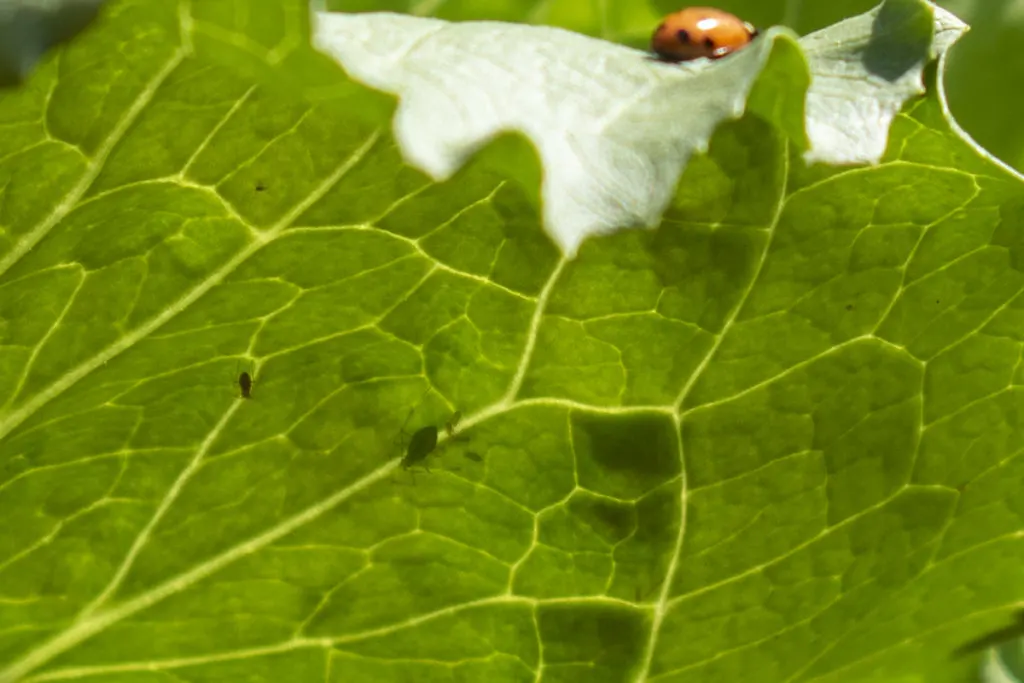
As I mentioned above, the best way to get ladybugs to hang around is to give them the perfect place to stay. They want moist conditions and plenty of shady spots to hide. And most importantly, they want food. So long as these conditions are met, you’ll have ladybugs.
And once your little ladybug colony is well established, you’ll even find these startling creatures among your plants.
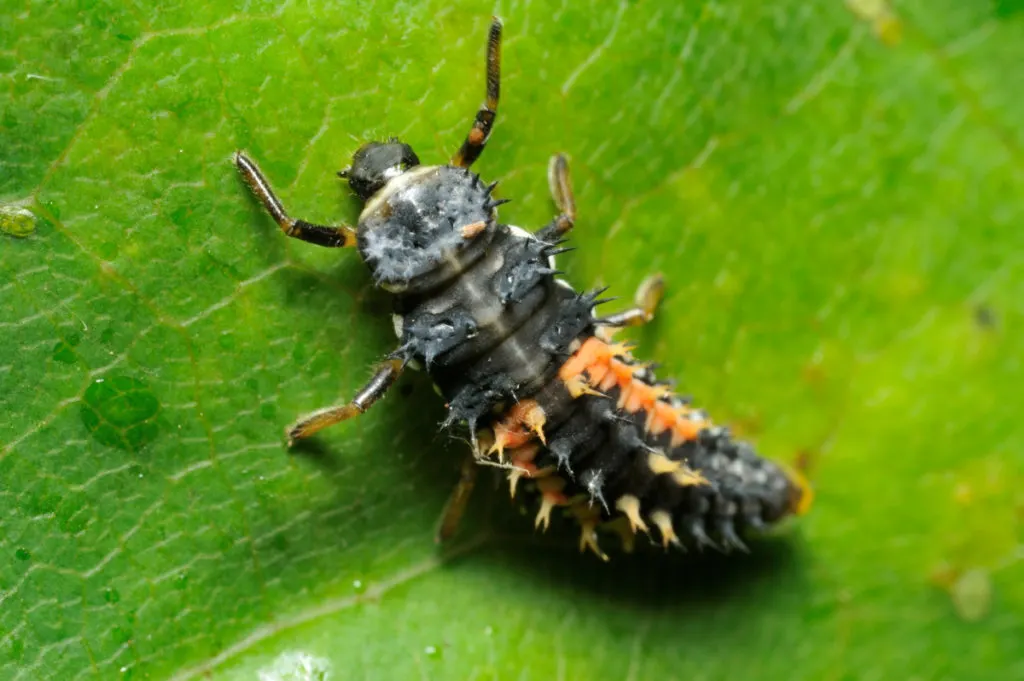
These are ladybug larvae. The next generation of aphid-munching beetles will be hanging out in your garden.
Another thing to consider when adding ladybugs to your garden is your other forms of pest control. Even something as simple as spraying with neem oil can persuade ladybugs to move on. While the neem oil only harms leaf-munching pests, you will be killing off the food supply for your beetles.
Be sure to think twice before using other types of pest control once your ladybugs are in play.
Using ladybugs as a natural form of pest control is highly effective, but it’s also a very hands-off approach. Once they are in your garden, you have to be willing to stand back and let them do their work. Even if that also means watching the aphids continue to suck on your plants.
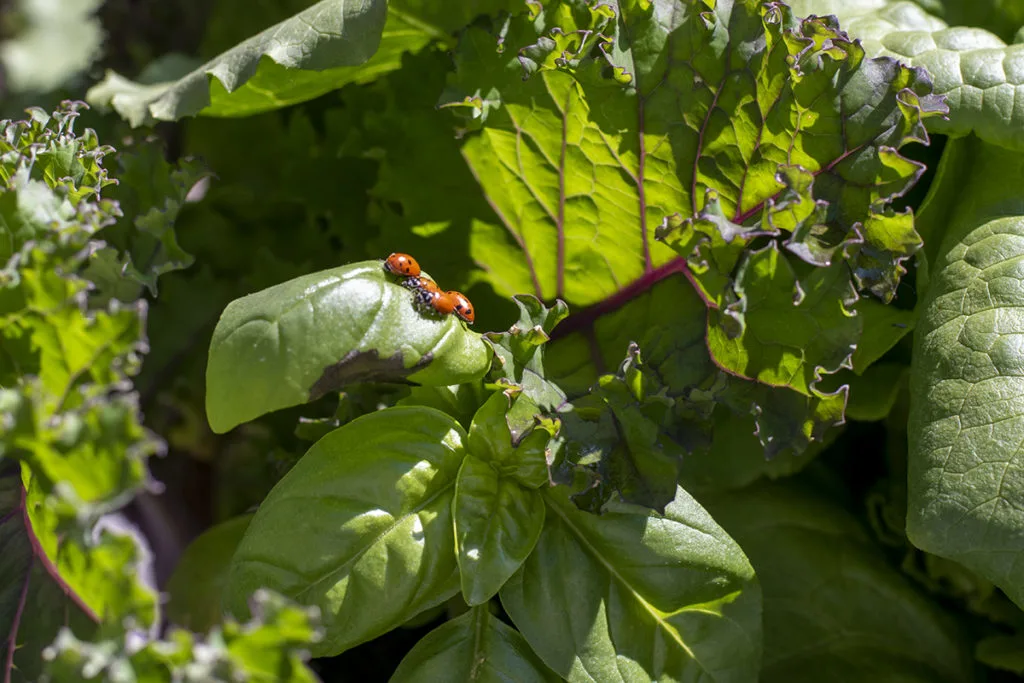
The ladybugs will eventually bring order to your garden; this can take some time.
In the end, though, you’ll have a colony of bugs who will happily do the work for you. Ladybugs are only one of many beneficial bugs you can put to good use in your garden. Here are eleven other insects you should welcome into your garden.
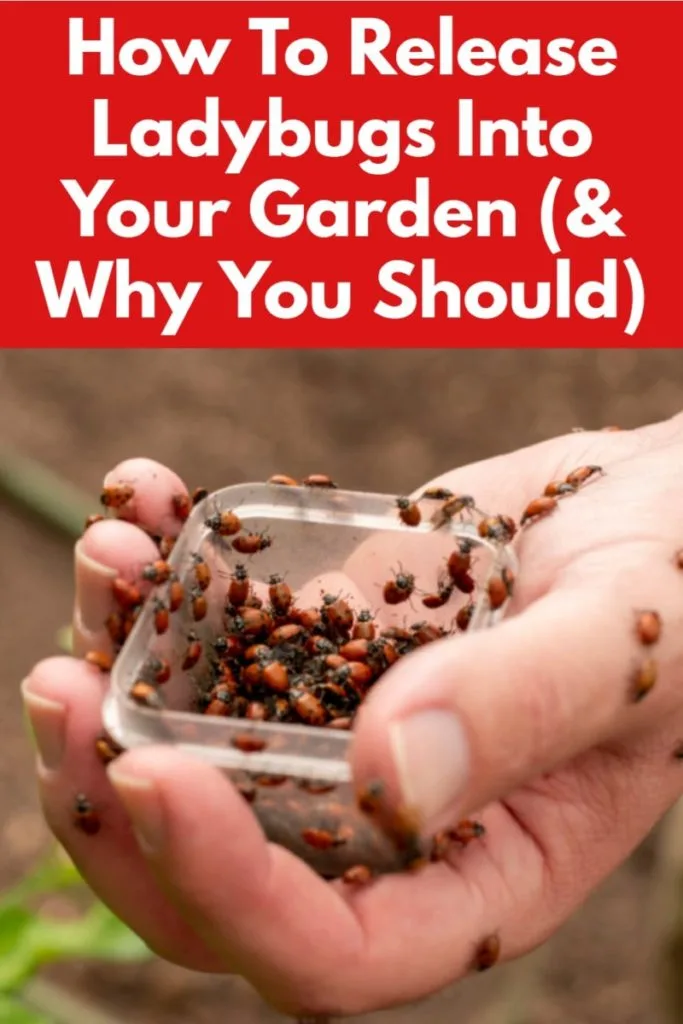

Get the famous Rural Sprout newsletter delivered to your inbox.
Including Sunday musings from our editor, Tracey, as well as “What’s Up Wednesday” our roundup of what’s in season and new article updates and alerts.


